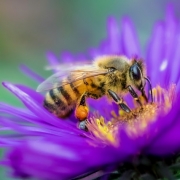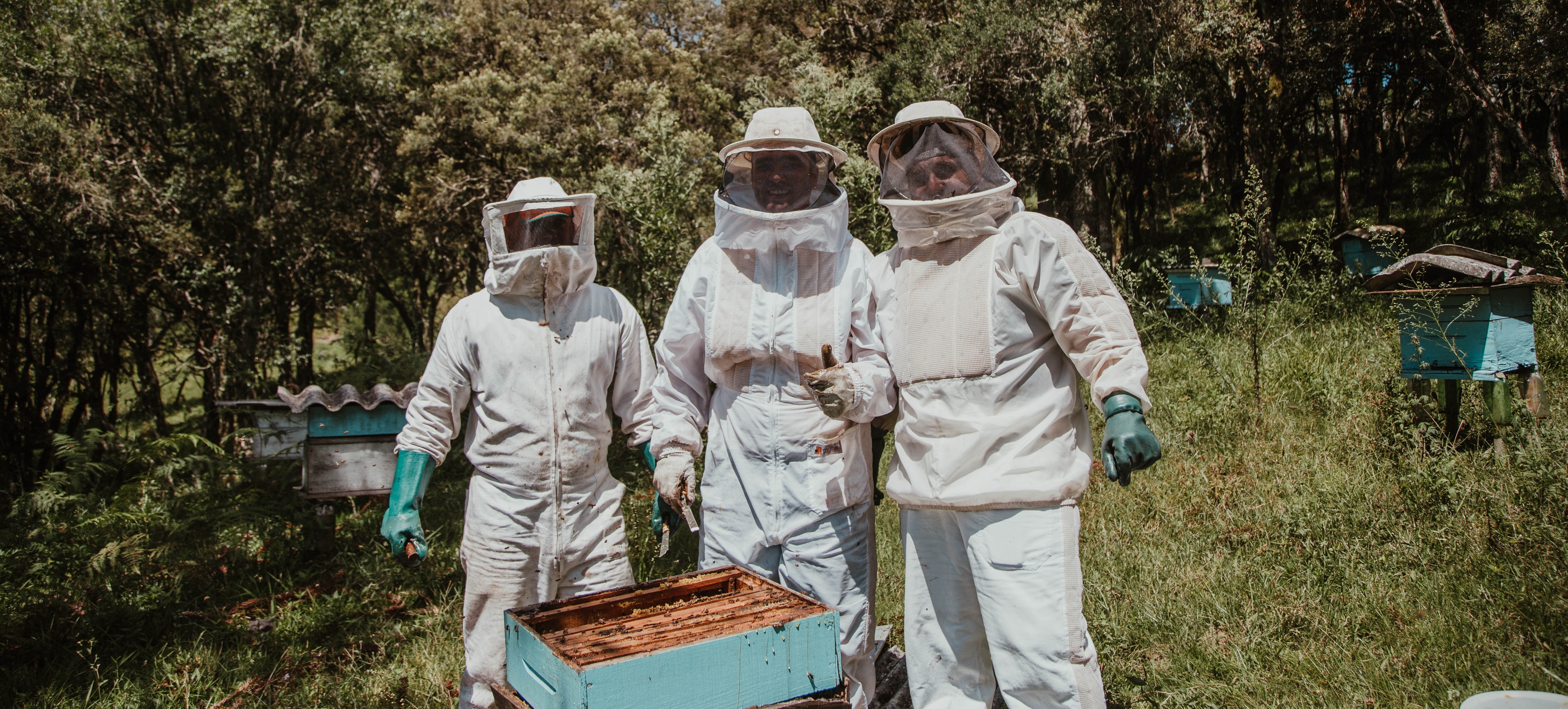9 Pretty Cool Facts About Bees
Bees have the ability to instill both wonder and fear into the hearts and minds of human beings. Whether you love bees or run away from them, learning about these insects and their role in nature is always interesting .And it seems like the more you learn about their world, the more you realize how little you actually know!
Here are nine pretty cool facts about the world of bees that you can use to deepen your knowledge about honeybees and impress your friends and neighbors too!
1. Bees have a secret color called “bee’s purple”
Bees have three photoreceptors that allow them to see some colors. Their eyes make color combinations based on: ultraviolet light, blue and green. They don’t have a photoreceptor for the color red which means that red looks like black for them. But they can see reddish wavelengths like yellow and orange. There is even a color called “bee’s purple” which is a combination of yellow and ultraviolet light which humans can’t see.

2. Flowers understand bee vision and use it to their advantage
The bee’s perception of color is directly linked to pollination. The color of flowers helps bees target the areas of nectar and pollen. Even though bees can’t see red, some red flowers are pollinated by bees. Red flowers that rely on bee-pollination actually have an iridescence on their flower petals that isn’t perceived by humans because it’s often in the UV spectrum. Pollinators, however, see an ultraviolet ‘landing strip’ that attracts them right to the center of the flower. In fact, many flowers have strinìking UV patterns on their petals that allow them to be identified much more quickly by bees.

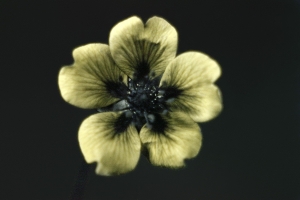
Potentilla reptans in visible light and UV light Wiedehopf20, CC BY-SA 4.0 via Wikimedia Commons
3. Bees can identify symbols
It turns out that bees are capable of recognizing certain shapes. Several experiments have been conducted that confirm bees can easily recognize radiating forms like these two flower shapes:

Further studies have shown that bees are also capable of distinguishing the difference between simple shapes. Using the shapes in the image below, scientists found that bees couldn’t differentiate between the shapes in the top row, meaning that the circle, square, triangle and slash must have looked the same to them. The same was discovered with the shapes in the bottom row. However, bees could discern between the shapes in the top row and the shapes in the bottom row.

In addition to choosing the right color to paint your hives, you can also assign a symbol to each one to give the bees a hand in finding their way back home.
4. Bees communicate with a special dance
When a forager bee goes out and finds a really good nectar source they come back to the hive and tell their fellow foragers where to go to get the good stuff before it’s gone. Actually, they ‘show’ the other bees by performing a precise series of turns and shakes to communicate their findings and tell the other bees where to go. And, yes ‘Waggle Dance’ is the technical term.
Here’s how it works: The dancing bee waggles back and forth as she walks forward in a straight line, then circles around to repeat the dance. The length of the middle line, called the waggle run, shows roughly how far it is to the flower. The circle she makes to repeat the waggle run indicates how far the source is. Bees use the position of the sun and the relative direction of the waggle dance to calculate the direction they need to go.

If you want to see it in action, take a look at this video from the BBC BBC The Waggle Dance
5. Bees are Master Builders
It’s so satisfying to look at freshly built honeycomb, isn’t it? It’s so precise, so exact, so uniform. But, have you ever wondered “Why hexagons”? Why not triangles or squares which would also fit together nicely and not leave gaps requiring extra wax to fill them like circles would?
As it turns out, bee and math enthusiasts have been asking the same question for a long time. In 36 BCE, Roman scholar Marcus Terentius Varro was pondering the hexagon-shaped honeycomb and proposed an answer, which was dubbed “The Honeybee Conjecture”.
The honeybee conjecture states that a hexagonal structure was the most efficient way to divide a surface into regions of equal area with the least total perimeter. But, Varro was never able to actually prove this theory.
It wasn’t until 1999 when mathematician Thomas Hales produced mathematical proof that Varro was right and the hexagon is simply the most efficient shape to hold the most amount of honey while using the least amount of building material.
f you are scientifically and geometrically minded, here is a link to Hales’ scientific paper.
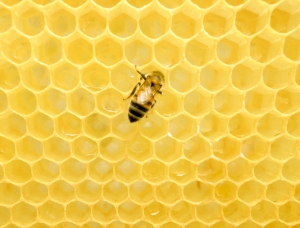
6. Beekeeping is the second oldest profession
People have been gathering honey from bees in the wild for at least 8,000-10,000 years. Based on Egyptian art, beekeeping has likely been happening for at least 4,500 years. Archeologists have found inscriptions in Egyptian tombs that depict pouring honey in jars and removing honey.
Evidence of pottery used as hives found in orderly rows dating from about 900 BCE was discovered at Rehov, a Bronze and Iron Age archaeological site in the Jordan Valley, Israel. In ancient Greece beekeeping was considered a highly valued industry and an ‘agricultural art’. Aspects of the lives of bees and beekeeping were discussed at length by Aristotle. Evidence has also been unearthed in China describing the art of beekeeping.
Bonus fact: Honey was found in King Tut’s tomb and it was still good!
 Egyptian tomb painting depicting honey gathering. Nina M. Davies, CC0, via Wikimedia Commons
Egyptian tomb painting depicting honey gathering. Nina M. Davies, CC0, via Wikimedia Commons
7. The Queen is not the ruler of the hive
Sorry, but her title is mostly ceremonial. She’s unique because she’s the largest female and the only bee capable of laying fertilized eggs which means the health of the queen can determine the health and survival of the hive. And, it’s true that she does receive special treatment from the worker bees who feed and clean her.
But she does not order the other worker bees around like you think a monarch might. The majority of the hive’s tasks are controlled by pheromones and other chemical signals that occur instinctively. When the queen is in the hive and doing her job she emits a pheromone that lets the bees know she’s present and accounted for which keeps the hive calm. However, if there’s a problem with her performance the worker bees will swiftly decide that it’s time to replace her.
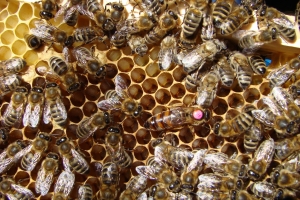
8. Drones don’t survive the winter
The male bee has a very important job and a very sealed fate. A drone’s purpose in life is to assure the survival of the species by mating with queen bees. And after performing this valiant and essential task, they die.
When the males are hanging out in the hive before flying out to mate with a queen a male bee doesn’t harvest nectar or pollen, doesn’t help feed eggs or larvae, doesn’t build anything, doesn’t clean, and doesn’t even have a stinger so can’t defend anything either. They eat and take up space.
So, a drone who is still in the hive at the end of the season is going to meet a tragic fate in the fall. The worker bees, who are programmed for efficiency, are not going to waste any extra space, honey or energy on drones. So, once the temperature starts to drop; out they go in the name of efficiency. The workers banish the remaining drones from the hive out into the elements never to survive.

9. Queens Can Quack and Toot
Ok, it isn’t exactly quacking like a duck, but it’s kind of similar. When queens are ready to hatch out of their cells they begin making vibrations that resemble a sort of quacking sound. Then she chews her way out of the cell and her vibrations change and she starts making a ‘toot’ sound. Researchers believe that this ‘tooting’ is a sort of battle cry letting the rest of the bees know that she has hatched, she is the first, and that it would be best to not let the other queens hatch to avoid having a sting-battle to the death. As we know, there can be only one queen!
If you’re curious about how these toot and quack vibrations sound, here is a link to some audio recordings and more details. https://www.snexplores.org/article/honeybee-queens-quack-toot-sounds-hatching-new-queen-duel
If you get to hear a queen toot while you’re doing your hive checks, consider yourself very lucky. It doesn’t happen that often that we get to witness the birth of a queen.

I’ve written it before and I’ll write it again – there is always something new and interesting to learn about when it comes to bees, and there are so many different paths you can follow once you get started. It really is like discovering a whole new universe. As we learn new things we enhance the world we live in and we deepen our understanding of our environment for ourselves and others. So, go ahead – share with us in the comments – what do you find most fascinating about bee life?
Laura Markus
Laura Markus is a blogger and beekeeper based in Italy, but originally from the U.S. She is fascinated by all things bees, but mostly by how they communicate. When she’s not hanging out at the hives she is also an English Teacher and Fluency Coach for non-native English speakers.
